
Can I Use a Curb Adapter?
Posted in Facility Operations
A contractor or Tenant field rep calls you up and asks this question. What do you say? First off, what is a curb adapter? This definition can mean something different to everyone. Often when an HVAC unit is being replaced, the new unit does not identically match the existing curb size and drop locations. A curb adapter is one remedy to this problem. However, many times curb adapters are not designed properly.
A curb adapter must be custom-made to meet the new unit’s specifications. Curb adapters have their place in design and installation but are widely and inappropriately used. More often than not, the curb adapters are made with flat surfaces that allow water to puddle on the curb and promote rust and corrosion. With a proper installation, curb adapters can reduce installation cost and speed up the time to project completion.
CONSIDERATIONS
If a curb adapter is suggested to be used on a project, the contractor MUST provide shop drawings for approval by the engineers. The curb adapters are to be pre-approved by the equipment manufacturer. When reviewing the curb adapter, the following items must be considered:
- Addition to the height
- Duct transitions
- Increase in static pressure
- Curb adapter transitions (must be sloped – no flat areas of the curb adapter)
- Curb adapter to be designed by reputable manufacturer
- Review of the structure support
Every rooftop unit (RTU) replacement will warrant the discussion for what type of curb should be used or allowed to be installed. Some owners have strict rules on the use of curb adapters, while others are a little more relaxed. As engineers, TES has an obligation to help the owner realize the implications of using curb adapters. Below is a list of definitions in the order of preference to how we would like to see a curb be used. The installation of a curb adapter is last on the list, but there are instances where curb adapters are quite appropriate and offer an installation savings and must be considered.
GLOSSARY
Direct Replacement – The replacement equipment will fit on the existing curb with no modifications. The existing curb must be in good shape.
Full perimeter curb – The existing curb will be removed and a new full perimeter curb will be installed and flashed into the roof. The curb will most likely be provided by the RTU manufacturer.
Adaptive Curb – The existing curb will be removed and a new adaptive curb will be installed and flashed into the roof. An adaptive curb will transition to the shape of the replacement unit from the footprint of the existing curb that was removed. This shall be used when it is required to transfer the weight of the replacement unit to the footprint of the existing when structural issues are a concern.
Curb Adapter – The existing curb will be used with an extension being added to the top of the existing curb that transitions the existing curb shape to the shape of the new curb. This type of equipment support should only be used with prior discussion with TES, based on the unit fit scenarios below:
Close fit – in cases where the replacement unit is a close fit to the original (both unit dimensions and supply and return opening orientation), the option of using a curb adapter can be discussed.
Poor fit – when the replacement unit does not come close to matching the existing curb dimensions or air opening orientation, a curb adapter should be not be considered.
WHEN IT WORKS
If the unit footprint and the supply/return openings in the unit match closely, a curb adapter should be considered for the project.
Instances where this is not the case, the curb should be reworked. Below are examples of when a curb adapter may and may not be appropriate in a retrofit situation.
Figure 1: Curb Adapter Consideration

Figure 2: Curb Adapter is Not Appropriate

Design
Curb adapters have many undesirable characteristics over other curb designs. The most obvious is the structural integrity of the curb adapter. Proper weight distribution to the curb is a must when setting a rooftop air conditioning unit. By changing the center of gravity above the existing curb, the weight distribution will change. While problems may not have been seen in smaller units, larger units will result in major changes to the loading onto the existing structure by redistributing the load to another point or concentrating a larger portion of the load to another area. If a unit is physically larger and placed on a curb adapter, the load on the existing structure may exceed the initial design. This would happen by just increasing the load concentration on the area supporting the existing curb.
Overall height is another concern when applying curb adapters to a RTU replacement. By adding the adapter curb onto the existing equipment curb, the height will increase. This will encroach on the sight lines of the property and possibly cause the air conditioning equipment to be seen from occupied areas. This is undesirable and will cause an eyesore on the property.
Higher static pressures are also caused by the transitions that are used in the curb adapters. With a full perimeter curb replacement the duct transition can be worked from or below the roof while meeting SMACNA guidelines and aligning the supply air opening in the unit with the existing ductwork that will minimize a static pressure increase. Curb adapters utilize a compacted transition that will drive up the static pressure on a unit. This will increase the brake horsepower of the supply fan and may lead to the installation of an oversized supply fan motor. By increasing the static pressure, the operating cost will also increase.
TES does not endorse the wide use of curb adapters but there are instances where a curb adapter would be the appropriate solution to a retrofit based upon installation cost. Due to complexities, TES does suggest that landlords do not permit the use of this style of curb when being provided by the tenant. Please contact us if you have further questions regarding curb adaptor usage.

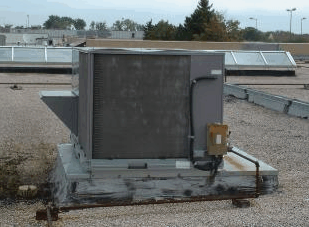
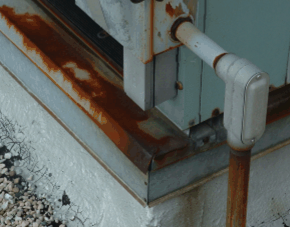
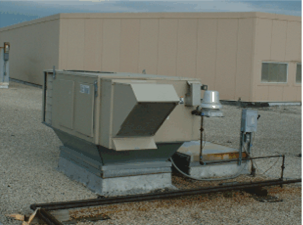
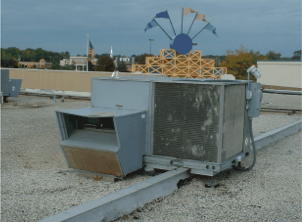
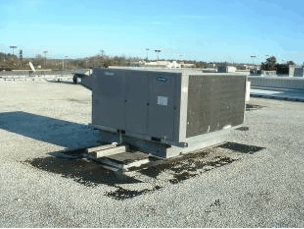
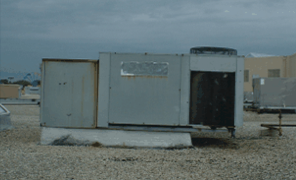
 Previous STORY
Previous STORY